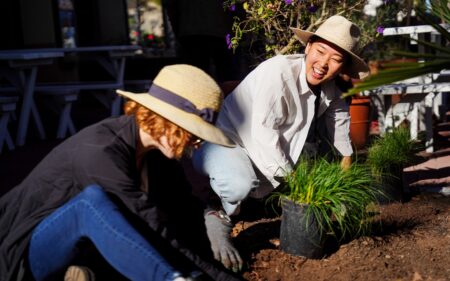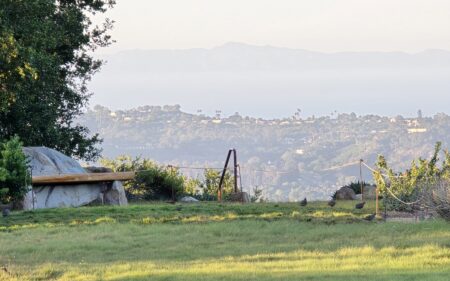Understand, Protect, & Grow
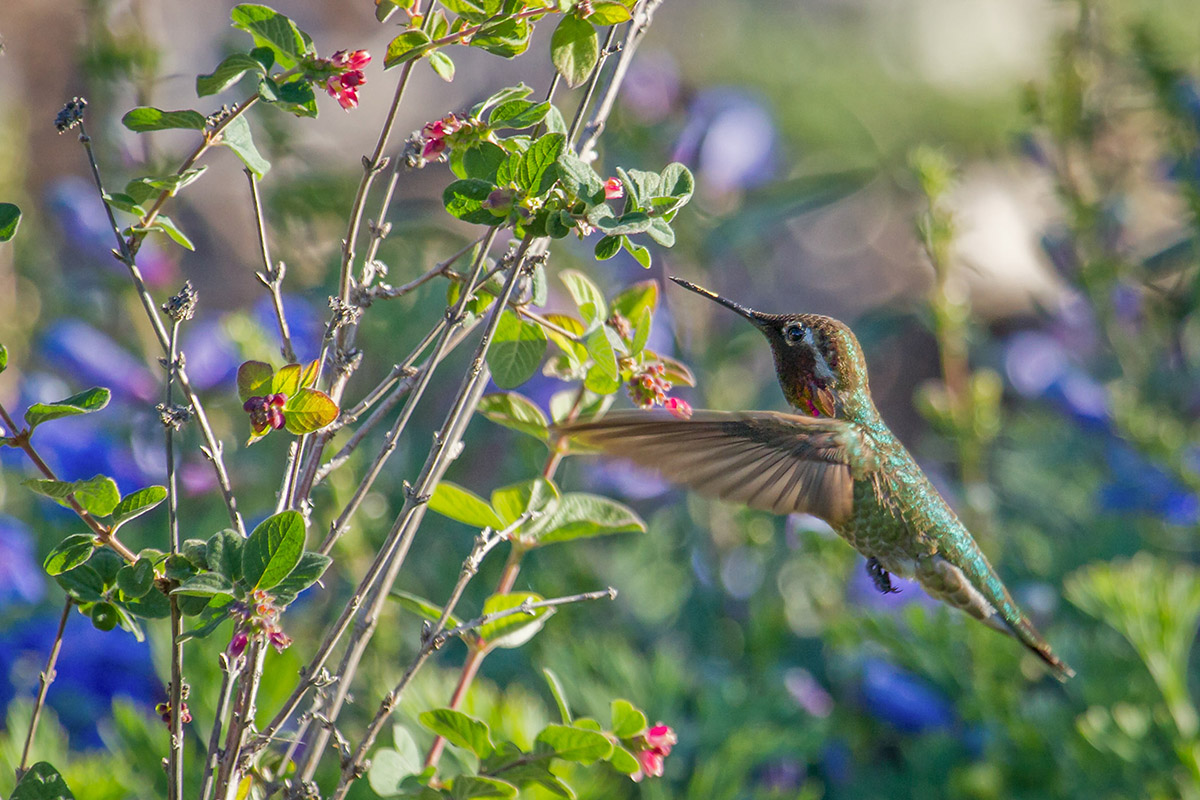
plant power
Native Plants Are the Foundation of All Life
Native plants are the foundation of all ecosystems. Because these plants have evolved in their habitats over millennia, the organisms around them have also evolved to eat, find shelter in, and otherwise rely on these specific native plants. Over time, these relationships have become a complex tapestry of interdependent lives that connect to build rich systems. Systems that all life – including humans – relies on. Without the foundation of these precious plants, the building blocks of a healthy ecosystem weaken.
Together, we can make choices about our landscapes to ensure they’re equally as beautiful as they are beneficial. Join us in our goal to get 30% coverage of native species in the spaces where we live, work, and play. This effort can do a lot to support the web of life, which in turn, supports all of us.
What Are Native Plants?
A native plant is one that has evolved in a particular place and continues to inhabit that geography in the wild. At Santa Barbara Botanic Garden, we grow plants that are native to the state of California and the California Floristic Province, which extends into Oregon to the north and Baja California, Mexico, to the south.
However, since plants don’t understand state boundaries, our Living Collection includes some plants native to a broader region extending beyond California’s borders, even across the western United States. On the other hand, we also have plants that are very specific and considered native to only one mountain range in California.
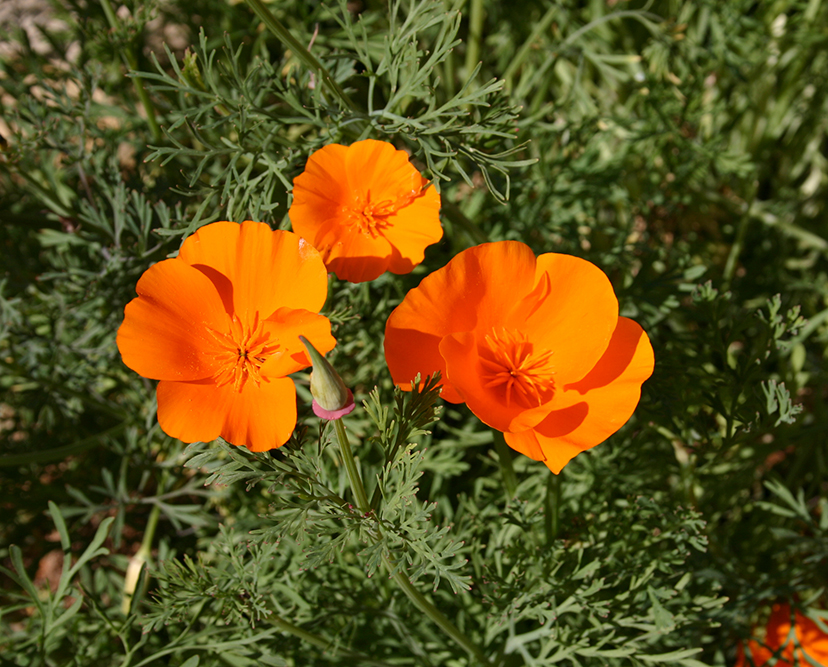
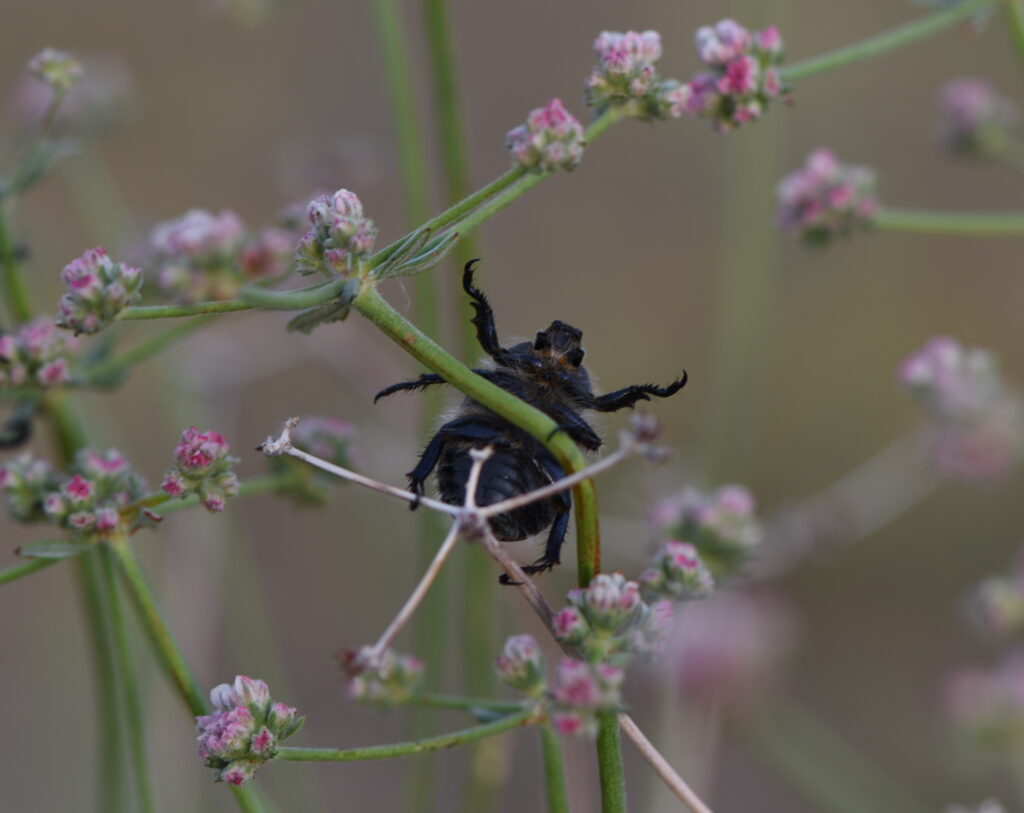
The Regenerative Power
of Native Plants
We believe one of the most direct solutions to our climate and biodiversity crisis lies within our ability to harness the regenerative power of native plants. Whether you’re a nature lover, home gardener, urban planner, or land manager, the Garden provides insights and resources necessary to understand, protect, and grow native plants in your community. Because, although humans are one of the greatest threats to native plants, we can also be one of their greatest allies. With a passion for the health of our planet and a legacy of transforming knowledge into action, the Garden is inspiring a movement of native-plant advocates from backyards to the backcountry of California.
Climate Change
Our changing climate poses one of the most far-reaching and complicated challenges humans have ever faced. While the solutions will come from a variety of sources, we can turn to native plants to gain insight into this critical issue. Careful study of native plants’ responses to climate change can help us understand the scope and speed of change. Learning how to support native plants and habitats helps build the resilience necessary to thrive in an uncertain world. Through native plant horticulture, research, conservation, and education, we’re identifying patterns and looking for solutions to the climate crisis.
Biodiversity
Native plants form the foundation of ecosystems across the planet. Starting with the tiniest insects and invertebrates, native plants nourish and provide habitat for survival. In turn, those insects feed other organisms in a complex and dynamic web of relationships. This vast biodiversity is one of the reasons for us to find hope in the face of a changing climate. By studying biodiversity, starting with native plants, the Garden helps build an understanding of how to adapt and thrive in virtually any condition.
Synergy Between Plants and People
Breathe in and exhale. With that breath, you are exchanging carbon dioxide and oxygen with plants — a precious interplay that we often overlook. Beyond this, plants, specifically native plants, provide year-round food, pollen, and nectar for caterpillars, bees, and a host of other pollinators that enable California’s vast food production system. Since time immemorial, native plants have provided fiber, building materials, and food to support entire civilizations. In return, humans have thanked, cared for, and tended plants. We invite you to reconnect to the natural world by planting and spending time among native plants.
Planting With Purpose
As with any project, planning is one of the most important steps to building a successful garden.
Before you begin purchasing and installing plants, it’s important to think about what kinds of goals you might have for your design.
Water Wise
California’s Mediterranean climate means that we experience a seasonal drought from around May until about October nearly every year. Planting native plants that are adapted to our Mediterranean climate and more specifically, your local conditions, will help ensure their success with little to no irrigation, once established. Additionally, harvesting rainwater through grading berms, swales, rain tanks, and laundry to landscape systems, can help reduce your water bill and your impact on a precious resource.
If you’re ready for a garden that is full of life and saves you water, time, and money, here is a guide to the most beautiful and reliable native plants available for our local gardens.
Wildlife
One of the best reasons to garden with native plants is that native plants attract native wildlife. Starting with pollinators and beneficial insects, native plants support diverse systems that will add color, activity, and interest to your garden.
Fire Wise
Fire is a reality in California. While wind-driven wildfires can be unpredictable and devastating, there is evidence that well-maintained landscapes with native plants like oaks (Quercus spp.) can help protect communities. Paired with home hardening to reduce ember risk, these landscapes become assets — not liabilities. Thoughtful design using the right native plants, minimizing vertical and horizontal fire ladders, and ensuring safe access for emergency crews can all work together to create both beauty and peace of mind.
Beauty
Whether you are looking for year-round color, seasonal interest, or a certain growth form, native plants can provide the attractive beauty you want in your garden. From plants that remain green year-round to those that go summer dormant, there is beauty in the seasonality of native plants. A curated selection of native plants can produce year-round blooms, even in the heat of summer.
Companion Planting
For many people, gardening is about growing food. Adding native plants in and around vegetable gardens can have a variety of benefits for your harvest. Native plants attract native pollinators, which, in turn, help ensure bountiful fruits and seeds. Incorporating native plants into any garden can also help attract and retain beneficial insects, from ladybugs that eat aphids to beeflies that eat the larvae of numerous pest insects.
You can plant natives with your vegetables. One thing to keep in mind is to keep plants with similar needs together. This means planting water-tolerant natives close to heavily irrigated vegetables and growing more drought-loving natives farther away.
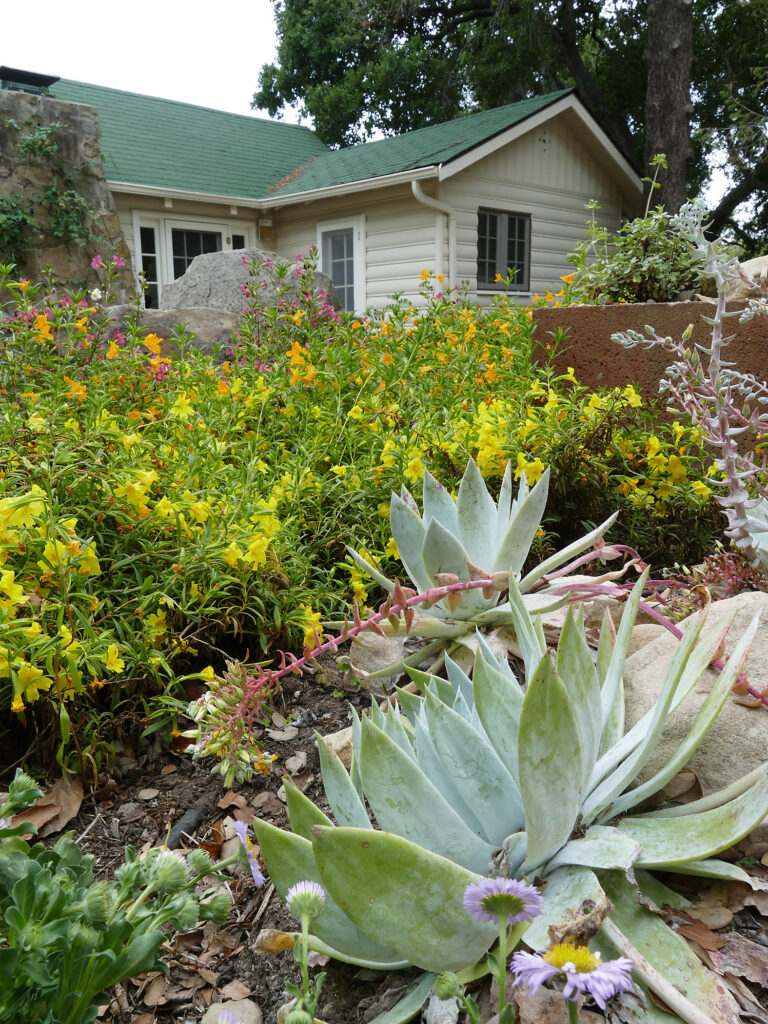
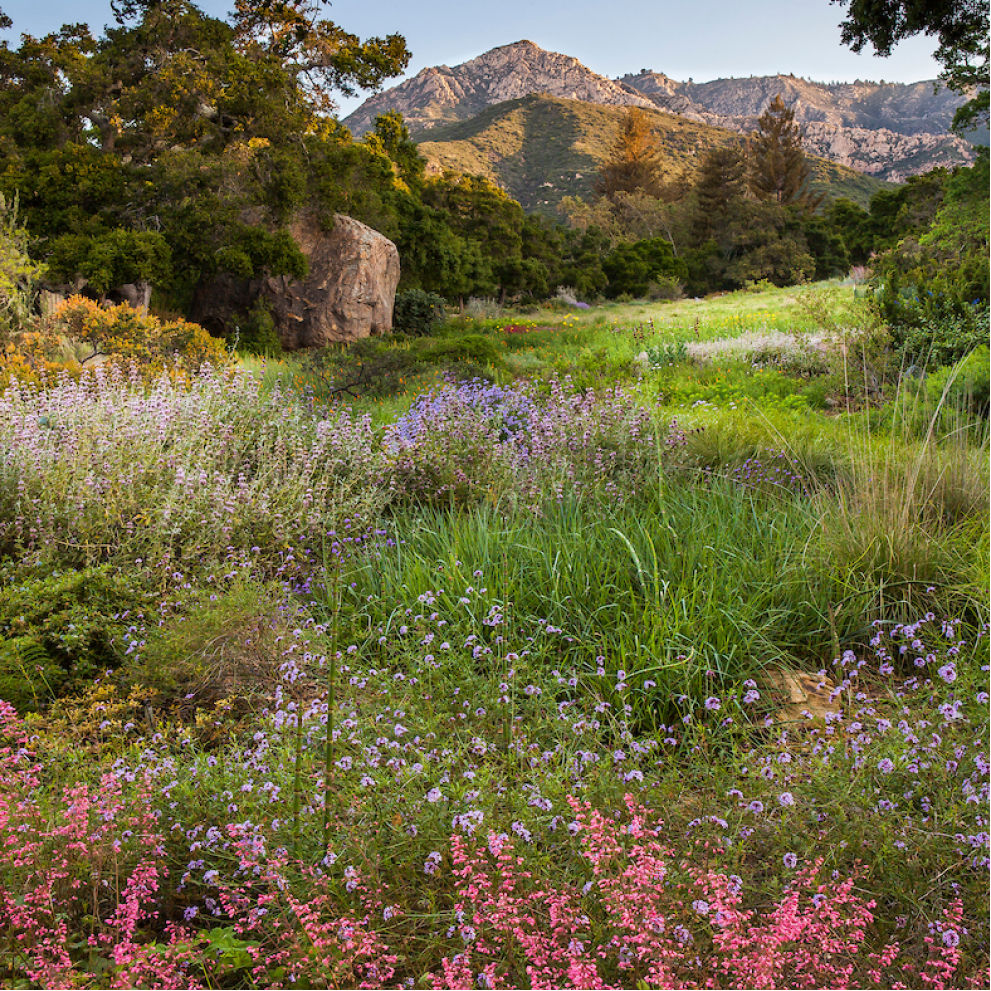
A Leader in Native Plant Horticulture
The Garden sits at the nexus of cutting-edge science and horticultural leadership. We are actively working to understand, document, and restore native plants and habitats throughout California while also researching and testing the latest horticultural practices to successfully grow native plants. These efforts — from our Living Collection research and cultivar introductions to our nursery resources, classes, and events — not only help ensure no native plant goes extinct but also, hopefully, encourage and inspire you to join us on our mission to conserve native plants for the health and well-being of all.
How the Garden Is Harnessing the Power of Native Plants
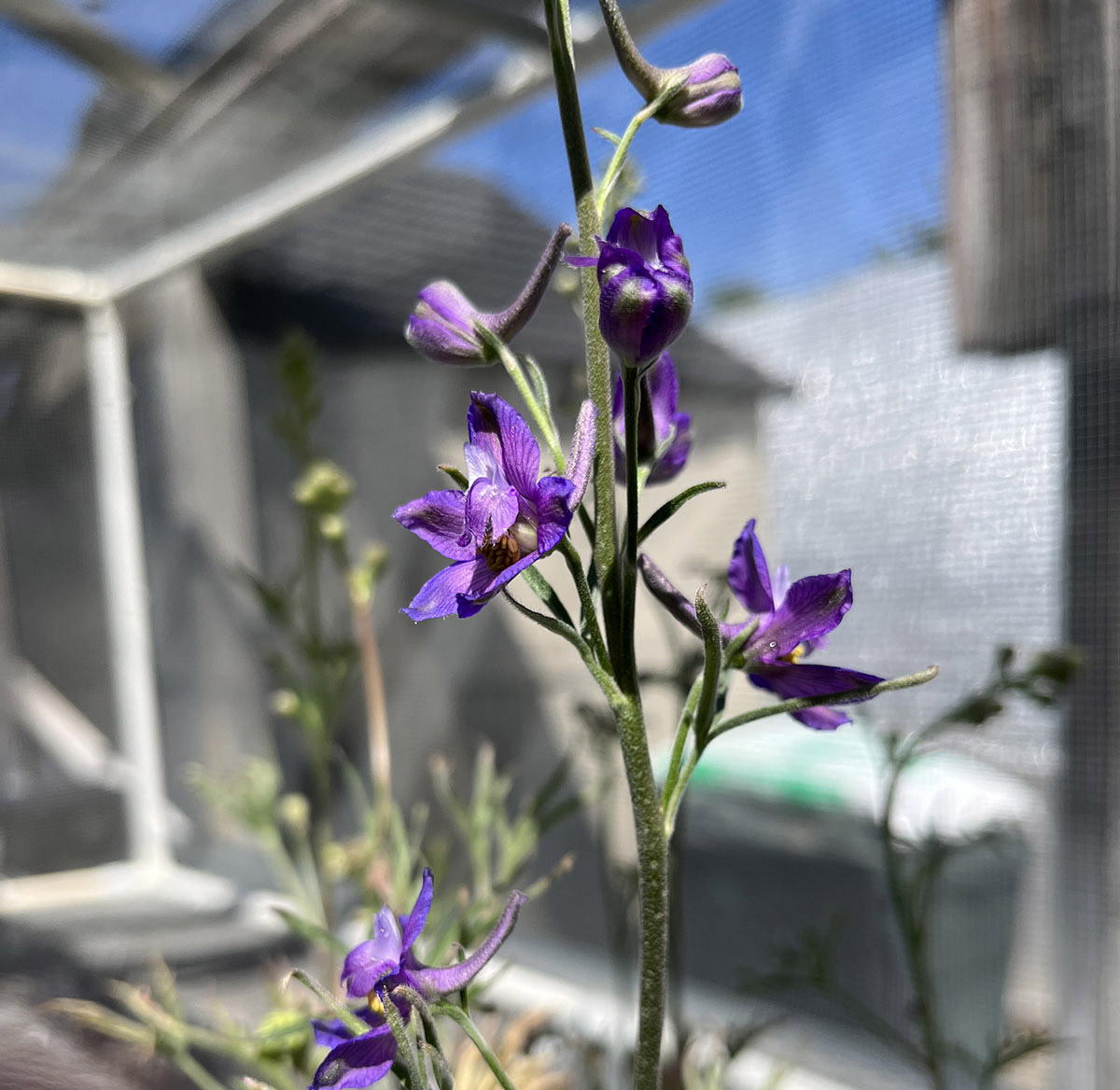
Conservation Groves
Saving endangered plants in their natural habitats is our ultimate goal, but sometimes that isn’t possible. In some circumstances, plants can be saved through creating conservation groves, which preserve the genetic diversity of species that are severely threatened in the wild.
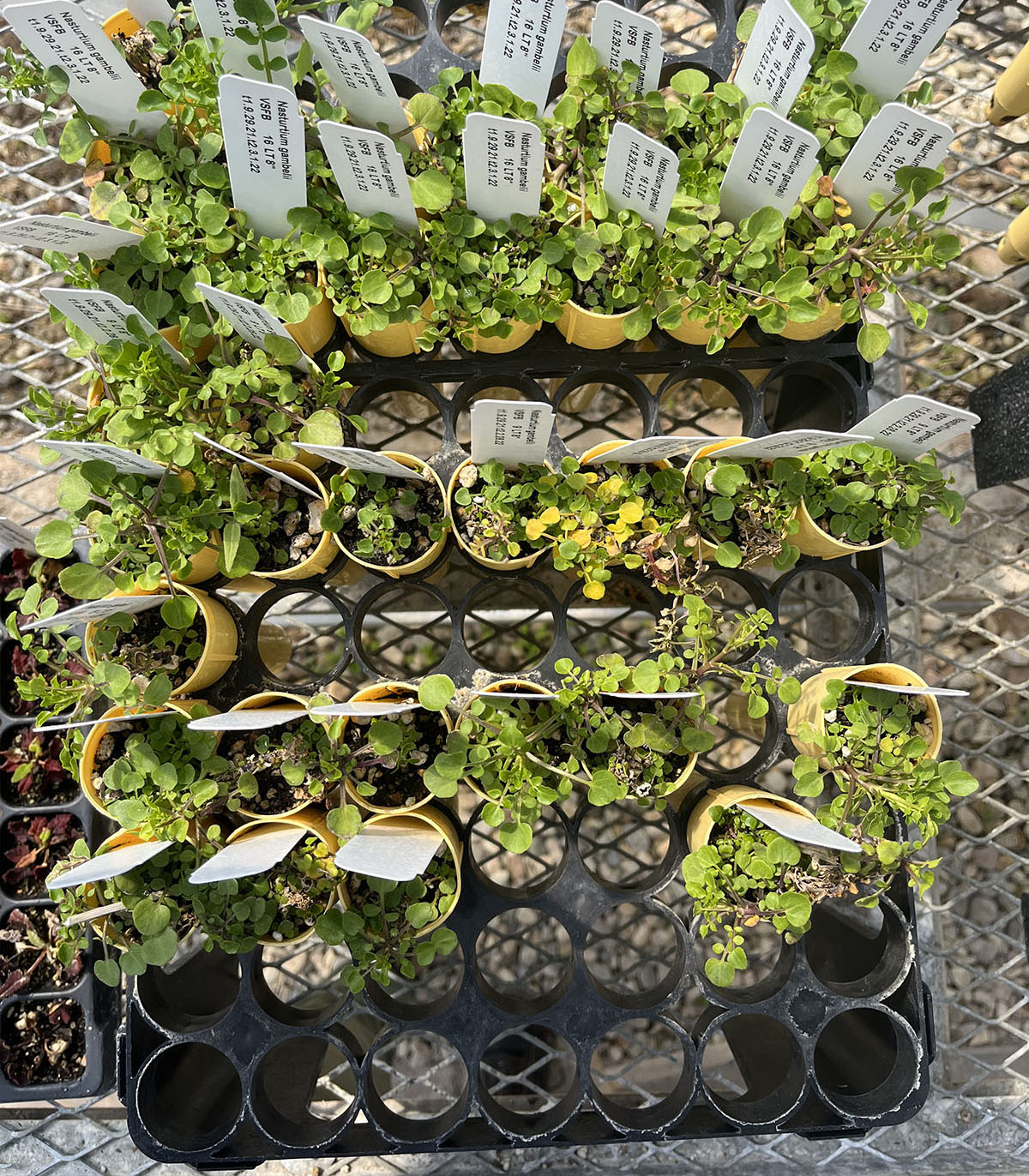
Propagation
Learning how to grow California’s native plants from seeds or cuttings is tough. Many species have yet to be successfully grown in a nursery setting! Our team has been responsible for leading breakthroughs in the cultivation of Channel Islands species, fire followers, and rare plants.
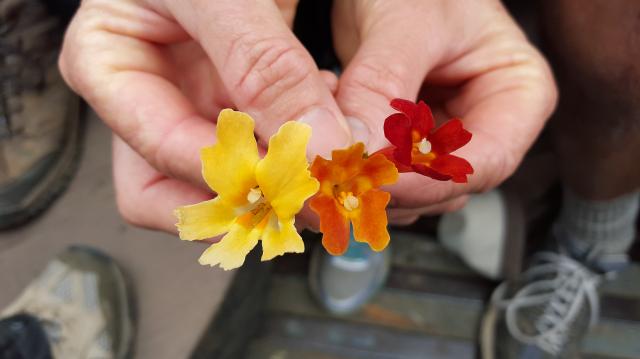
Research
Horticultural research can provide insight into the ecology of wild plants, as well as the cultural needs of plants for the home garden or city streets. Our years of research have led to the selection of new drought-tolerant plants, as well as recommendations for their care and cultivation.
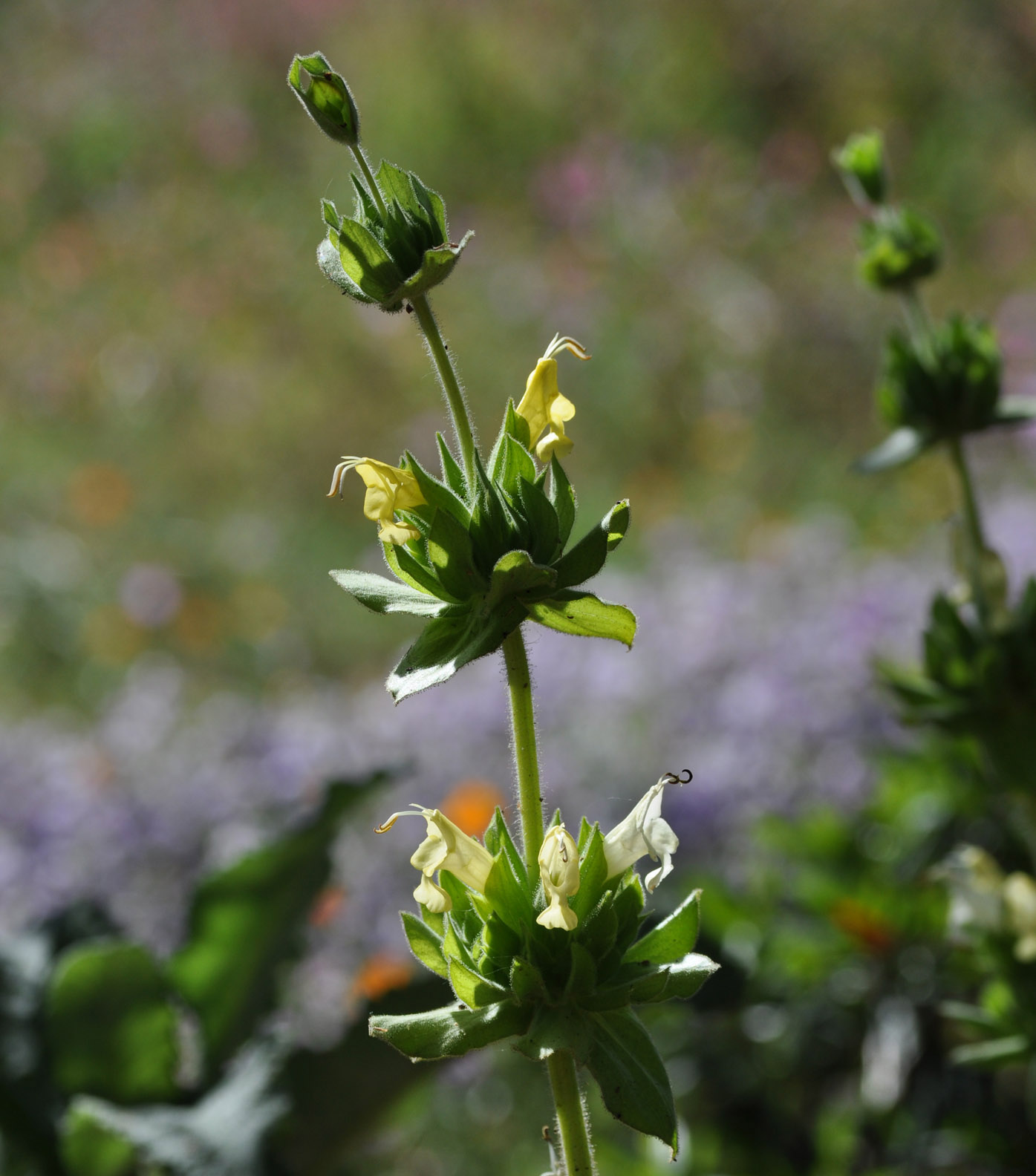
Introductions
The Garden has a long history of creating hybrids and introducing cultivars that excel in a garden setting including distinctive plants like Avis Keedy hummingbird sage (Salvia spathacea ‘Avis Keedy’) and the hardy Canyon Sparkles manzanita (Arctostaphylos insularis ‘Canyon Sparkles’).
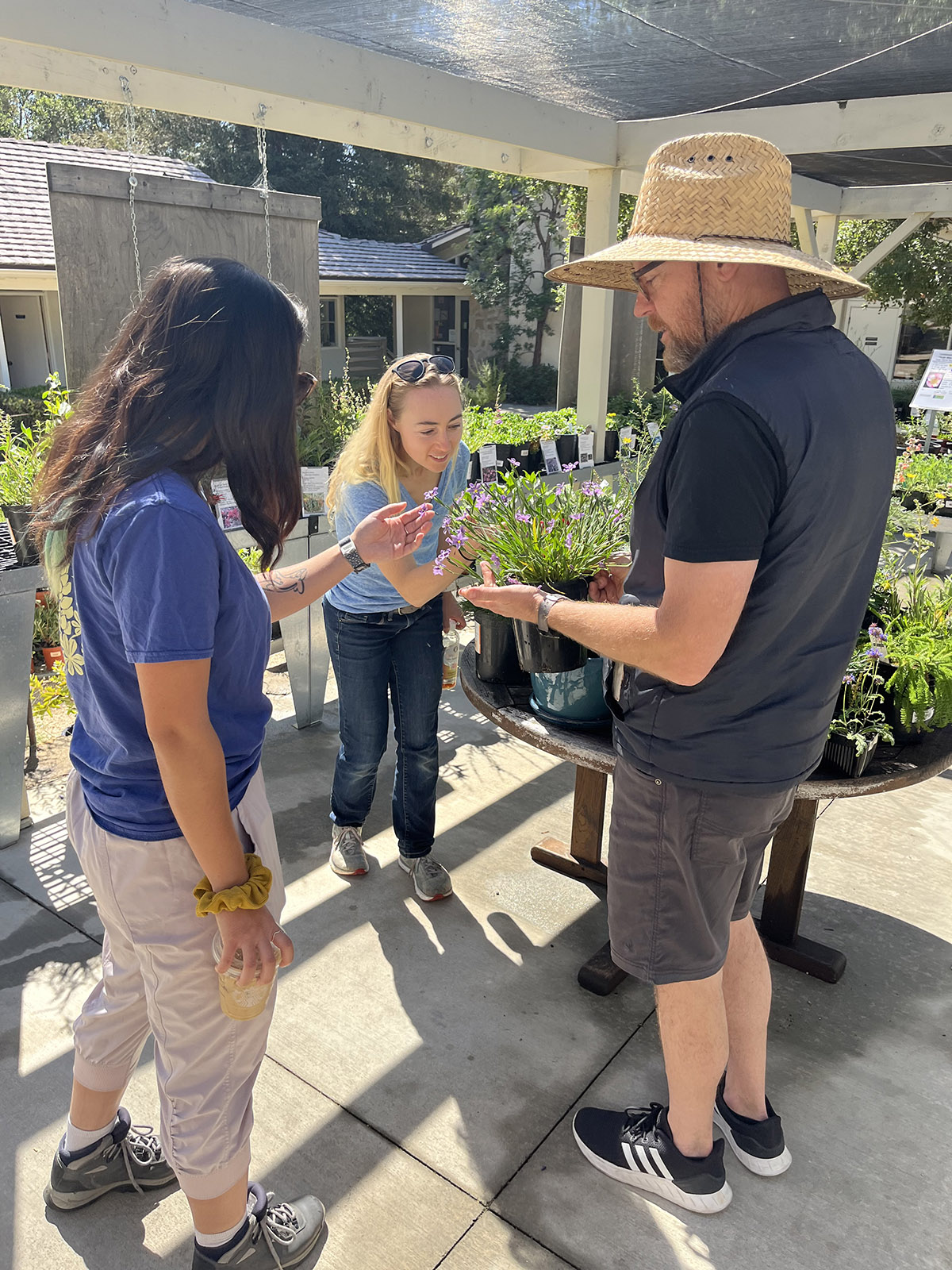
Education
Part of our mission is empowering everyone to plant native! Using our decades of research, we work to help everyone from landscape architects to the home gardener care for and create thriving native plant gardens.
Related Insights
-
• Horticulture, Conservation & Research, Gardening with Native Plants
Native Plants Transform Downtown Santa Barbara in New Pilot Project
-
• Horticulture, Botany, Conservation & Research, Gardening with Native Plants
Installing Your New California-Native Lawn
-
• Horticulture, Botany, Conservation & Research, Gardening with Native Plants, Education, Garden News
Introducing Ironwood Issue 38
-
• Horticulture, Botany, Conservation & Research, Gardening with Native Plants
Starting Your California-Native Lawn
 Donate
Donate